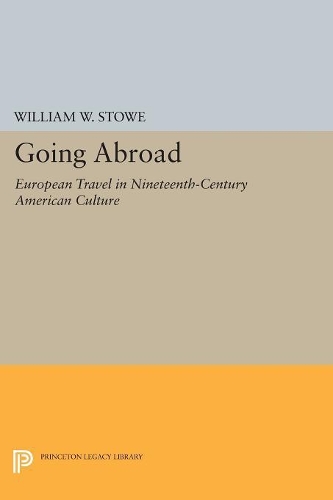
Going Abroad: European Travel in Nineteenth-Century American Culture
(Paperback)
Available Formats
Publishing Details
Going Abroad: European Travel in Nineteenth-Century American Culture
By (Author) William W. Stowe
Princeton University Press
Princeton University Press
30th May 2017
United States
Classifications
Tertiary Education
Non Fiction
818.30809355
Physical Properties
Paperback
272
Width 152mm, Height 235mm
369g
Description
In a nation struggling to establish its own identity, all kinds of Americans, for all kinds of reasons, were enchanted with Europe. A European trip, whether extravagant or modest, could serve social advancement, aesthetic enrichment, or personal curiosity. Travel allowed men and women, the descendants of European settlers or African slaves, to shed
Reviews
"Through diaries, newspaper articles, guidebooks, and magazine essays, Stowe examines the personal and social reasons that well-known travelers such as Emerson, Twain, and Henry Adams, as well as African Americans like David F. Dorr and women like Margaret Fuller, sailed east... These writers used their traveling experience to hone writing skills and create a literary style, much the same as travel writers do today."--Library Journal "... an almost sociological reading of some American travel literature... Works by writers like Mark Twain, Henry James, Margaret Fuller, Ralph Waldo Emerson, Washington Irving and others (including the African-American writers William Wells Brown and David F. Dorr) are reviewed to show how travel literature helped forge not only the identity of the nascent American nation but also the travelers' own identity."--New York Times Book Review "The ways in which the Old World was used and represented by American writers in the development of their nation's own cultural identity is a large, important and fascinating theme which Professor Stowe comprehends and examines in great deal."--Times Literary Supplement "Beginning with the work of Washington Irving, travel literature was a popular art form in 19th-century America... This volume effectively shows the evolution of the genre's conventions, the socioeconomic roots of its popularity, and the multiplicity of its social, cultural, and aesthetic functions."--Choice
